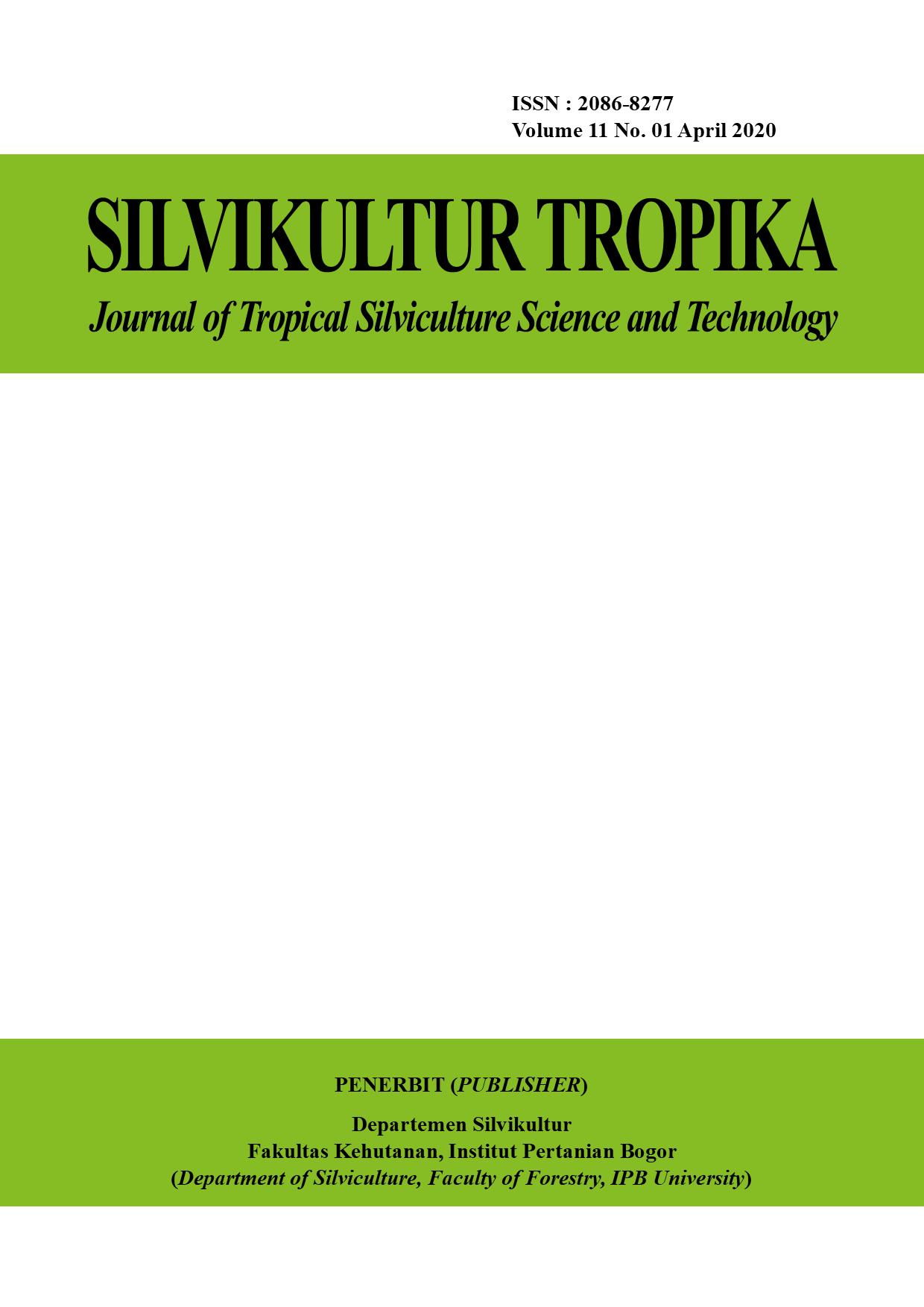Respon Fisiologi Mindi (Melia azedarach L.) dan Kedelai (Glycine max (L.) Merrill) dalam Agroforestri Secara Organik
Abstract
Mindi is one of commercial tree species for its timber. Sustainable management of mindi community forest can be obtained by inter-planting the trees with agricultural crop such as soybean. This study aimed to analyze physiological respond of mindi and soybean, which were planted in an organic agroforestry system. The research was done in Conservation Unit for Medicinal Plants at Cikabayan, Bogor Agricultural University (IPB). The first study was about the growth of mindi saplings in monoculture and agroforestry systems (with soybean). The experiment used completely randomized design (CRD). The second study was about the growth of soybean in monoculture and agroforestry systems (with mindi), and used split-plot design. The result show that nutrient uptake of N, P, and K in agroforestry system was higher than in monoculture. The increase of nutrient content in agroforestry system led to the higher increase of growth dimensions of mindi tree than the ones in monoculture. The content of soybean chlorophyll planted in agroforestry system was higher than the ones in monoculture. Soybean in agroforestry system had higher nutrient uptake of N, P, and K compared to the ones in monoculture. Soybean productivity in monoculture system showed higher result than the ones in agroforestry.
Keywords: chlorophyll, monoculture, root, tree dimension, varieties










